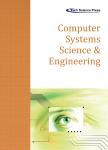Weed Classification Using Particle Swarm Optimization and Deep Learning Models
作者机构:Department of Computer Science and EngineeringThiagarajar College of EngineeringTamil NaduIndia Department of Information TechnologyThiagarajar College of EngineeringTamil NaduIndia
出 版 物:《Computer Systems Science & Engineering》 (计算机系统科学与工程(英文))
年 卷 期:2023年第44卷第1期
页 面:913-927页
核心收录:
学科分类:12[管理学] 1201[管理学-管理科学与工程(可授管理学、工学学位)] 081104[工学-模式识别与智能系统] 08[工学] 0835[工学-软件工程] 0811[工学-控制科学与工程] 0812[工学-计算机科学与技术(可授工学、理学学位)]
基 金:The authors received no specific funding for this study
主 题:Deep learning convolutional neural network weed classification transfer learning particle swarm optimization evolutionary computing Algorithm 1:Metrics Evaluation
摘 要:Weed is a plant that grows along with nearly allfield crops,including rice,wheat,cotton,millets and sugar cane,affecting crop yield and *** and accurate identification of all types of weeds is a challenging task for farmers in earlier stage of crop growth because of *** address this issue,an efficient weed classification model is proposed with the Deep Convolutional Neural Network(CNN)that implements automatic feature extraction and performs complex feature learning for image *** this work,weed images were trained using the proposed CNN model with evolutionary computing approach to classify the weeds based on the two publicly available weed *** Tamil Nadu Agricultural University(TNAU)dataset used as afirst dataset that consists of 40 classes of weed images and the other dataset is from Indian Council of Agriculture Research–Directorate of Weed Research(ICAR-DWR)which contains 50 classes of weed *** effective Particle Swarm Optimization(PSO)technique is applied in the proposed CNN to automa-tically evolve and improve its classification *** proposed model was evaluated and compared with pre-trained transfer learning models such as GoogLeNet,AlexNet,Residual neural Network(ResNet)and Visual Geometry Group Network(VGGNet)for weed *** work shows that the performance of the PSO assisted proposed CNN model is significantly improved the success rate by 98.58%for TNAU and 97.79%for ICAR-DWR weed datasets.




